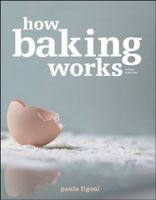Label
All
0
Clear all filters
Dough Relaxation
Appears in
By Paula Figoni
Published 2003
To rest or relax dough means to allow it to sit awhile. For example, bread dough requires a short bench rest before it is shaped. Laminated doughs, including croissants, Danish, and puff pastry doughs, usually rest in the refrigerator between folds. This rest period is important. It makes it easier to shape, roll, and fold the dough properly, because the dough becomes less elastic and more extensible.
Bread, croissant, and Danish doughs need to rest because the gluten is well-developed, meaning that it is very strong and elastic. Doughs that are strong and elastic—those with high alveograph P/L ratios—require more relaxation time than softer, slacker doughs with lower P/L ratios. Elasticity—the tendency of dough to shorten up or bounce back—can be a problem when dough is rolled and shaped. The further dough is stretched and the more it is worked, the more stressed it is. By relaxing dough once it has been worked, gluten strands have a chance to adjust to the new length or shape, and will not bounce back before baking.
Advertisement
Advertisement
The licensor does not allow printing of this title


